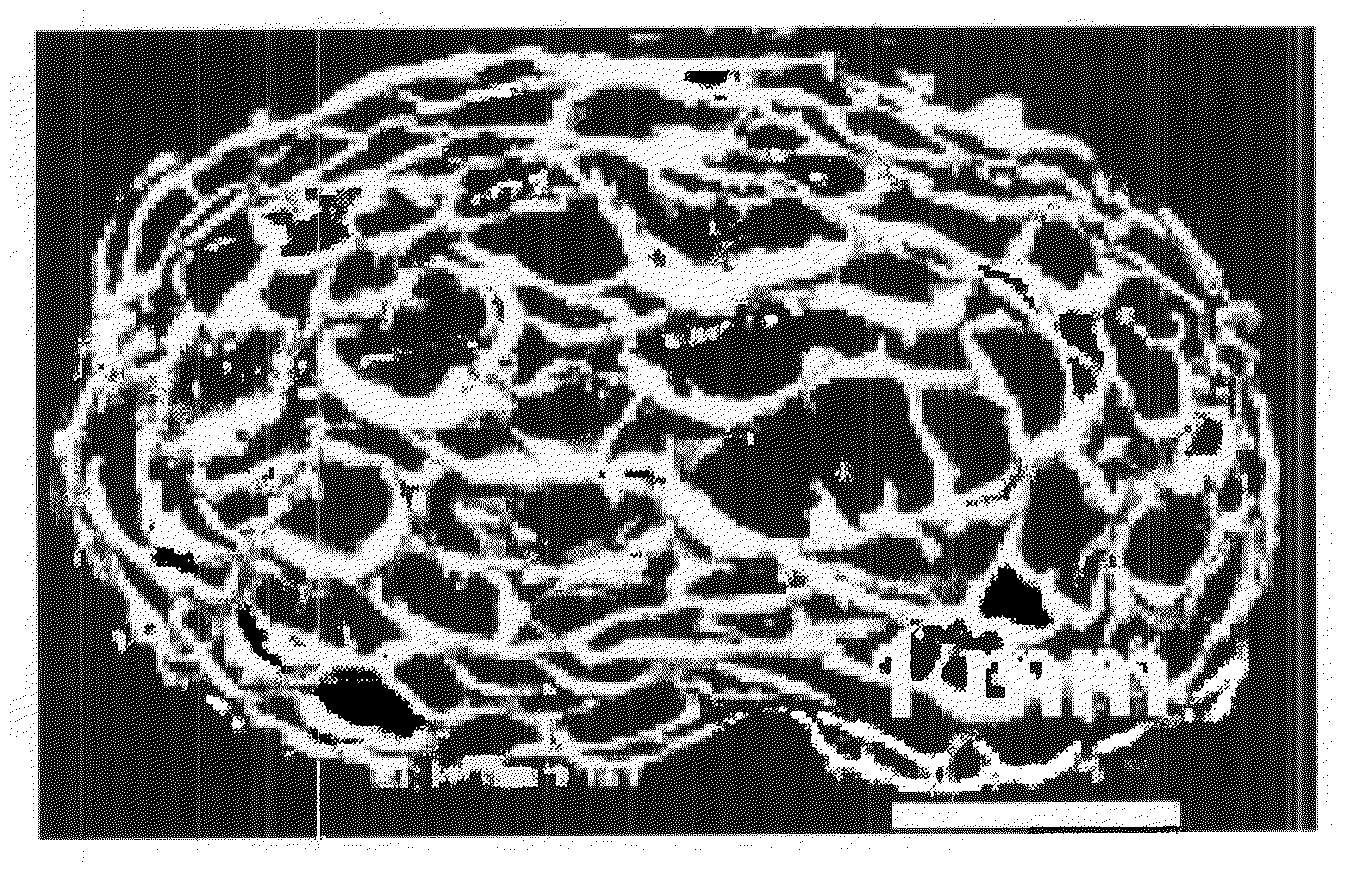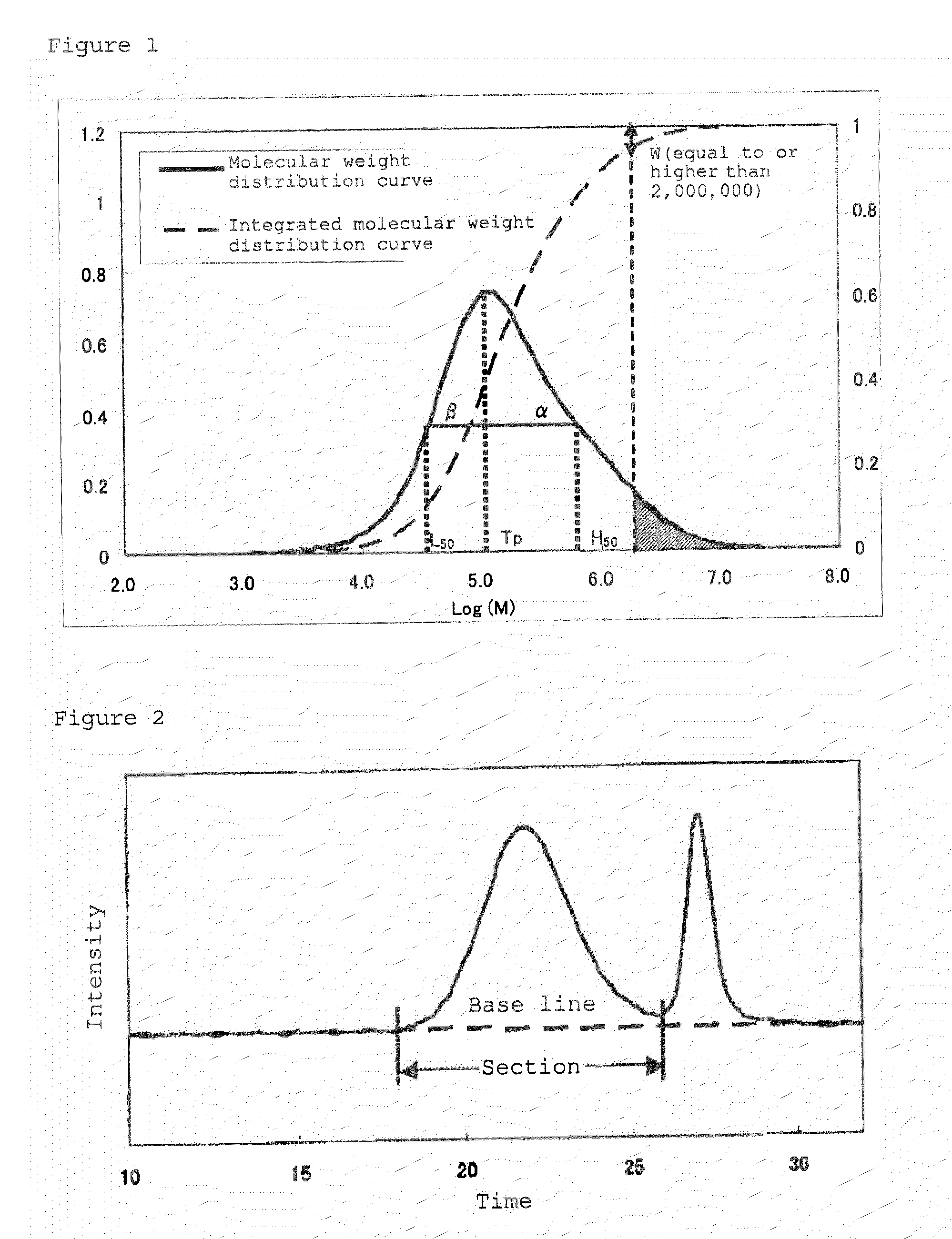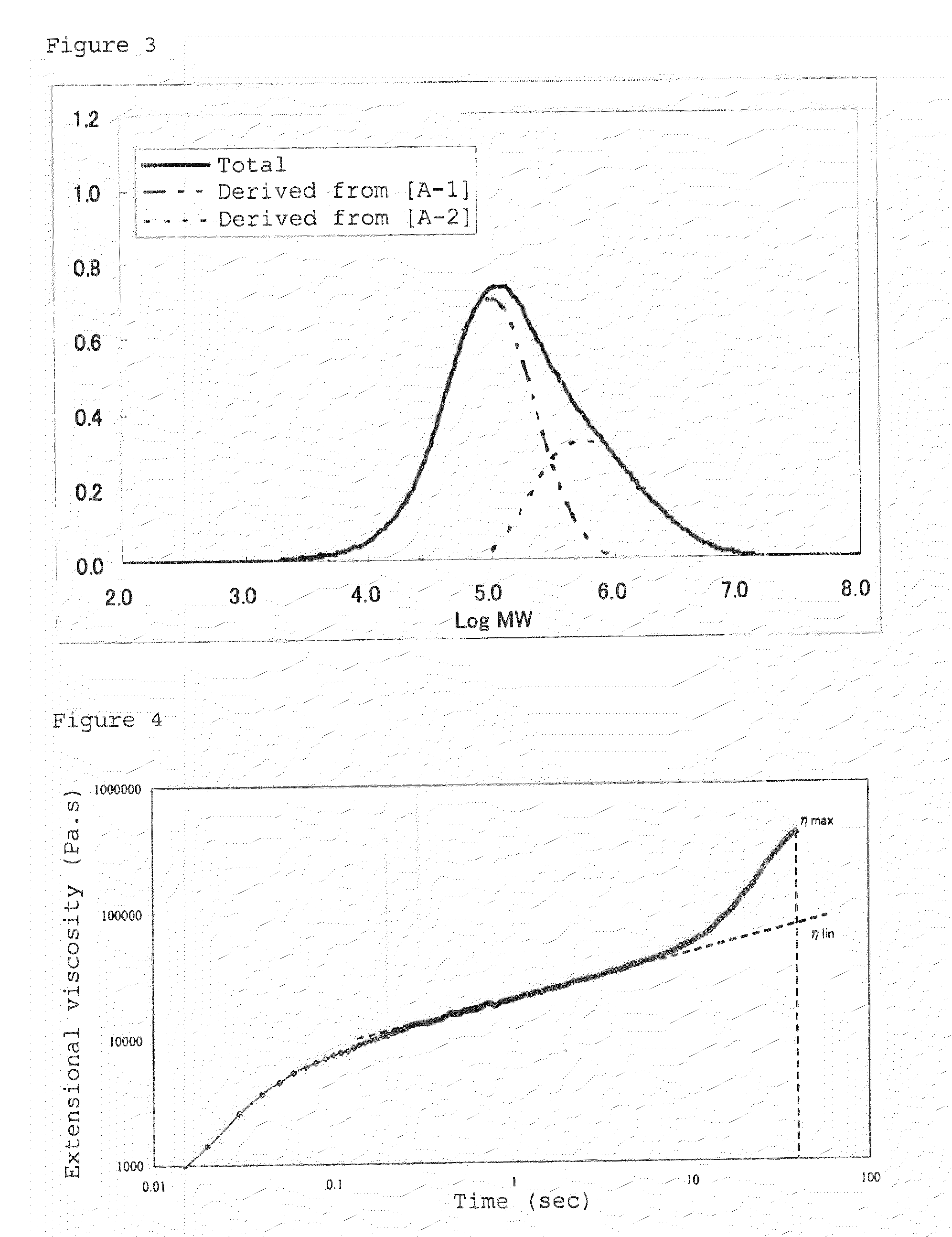Propylene-based polymer, production method therefor, composition using the same, and application thereof
- Summary
- Abstract
- Description
- Claims
- Application Information
AI Technical Summary
Benefits of technology
Problems solved by technology
Method used
Image
Examples
synthesis example 1
Catalyst Synthesis Example 1
(1-1) Chemical Treatment of the Ion-Exchangeable Layered Silicate salt
[0462]In a separable flask, 96% sulfuric acid (1044 g) was added into 3456 g of distilled water, and then 600 g of montmorillonite (BENCLAY SL: average particle diameter 19 μm, manufactured by Mizusawa Industrial Chemicals, Ltd.) was added as a layered silicate salt. This slurry was heated to 90° C. taking 1 hour in 0.5° C. / minute, and subjected to a reaction at 90° C. for 120 minutes. This reaction slurry was cooled to room temperature taking 1 hour, and filtered, after the addition of 2400 g of distilled water, to obtain 1230 g of a cake-like solid.
[0463]Then, into the separable flask, 648 g of lithium sulfate and 1800 g of distilled water were added to prepare an aqueous solution of lithium sulfate, and whole quantity of the above cake-like solid was charged therein, and further 522 g of distilled water was added. This slurry was heated to 90° C. taking 1 hour in 0.5° C. / minute, and ...
synthesis example 2
Catalyst Synthesis Example 2
[0472]A similar experiment as in Catalyst Synthesis Example 1 was carried out, except that, in (1-2) Catalyst Preparation and Preliminary polymerization of the above Catalyst Synthesis Example 1, rac-dichloro[1,1′-dimethylsilylenebis{2-(5-methyl-2-furyl)-4-(4-t-butylphenyl)-indenyl}]hafnium (75 μmol) was dissolved into toluene (21 mL) and used as a solution 1, and rac-dichloro[1,1′-dimethylsilylenebis{2-methyl-4-(4-chlorophenyl)-4-hydroazulenyl}]hafnium (75 μmol) was dissolved into toluene (21 mL) and used as a solution 2.
[0473]In this way, 30.9 g of a dried preliminary polymerization catalyst was obtained. Preliminary polymerization rate was 2.09 (preliminary polymerization catalyst 2).
synthesis example 3
Catalyst Synthesis Example 3
[0474]A similar experiment as in Catalyst Synthesis Example 1 was carried out, except that, in (1-2) Catalyst Preparation and Preliminary polymerization of the above Catalyst Synthesis Example 1, rac-dichloro[1,1′-dimethylsilylenebis{2-(5-methyl-2-furyl)-4-(4-t-butylphenyl)-indenyl}]hafnium (105 μmol) was dissolved into toluene (30 mL) and used as a solution 1, and rac-dichloro[1,1′-dimethylsilylenebis{2-ethyl-4-(2-fluoro-4-biphenyl)-4-hydroazulenyl}]hafnium (45 μmol) was dissolved into toluene (12 mL) and used as a solution 2.
[0475]In this way, 29.5 g of a dried preliminary polymerization catalyst was obtained. Preliminary polymerization rate was 1.95 (preliminary polymerization catalyst 3).
PUM
| Property | Measurement | Unit |
|---|---|---|
| Temperature | aaaaa | aaaaa |
| Temperature | aaaaa | aaaaa |
| Temperature | aaaaa | aaaaa |
Abstract
Description
Claims
Application Information
 Login to View More
Login to View More - R&D
- Intellectual Property
- Life Sciences
- Materials
- Tech Scout
- Unparalleled Data Quality
- Higher Quality Content
- 60% Fewer Hallucinations
Browse by: Latest US Patents, China's latest patents, Technical Efficacy Thesaurus, Application Domain, Technology Topic, Popular Technical Reports.
© 2025 PatSnap. All rights reserved.Legal|Privacy policy|Modern Slavery Act Transparency Statement|Sitemap|About US| Contact US: help@patsnap.com



